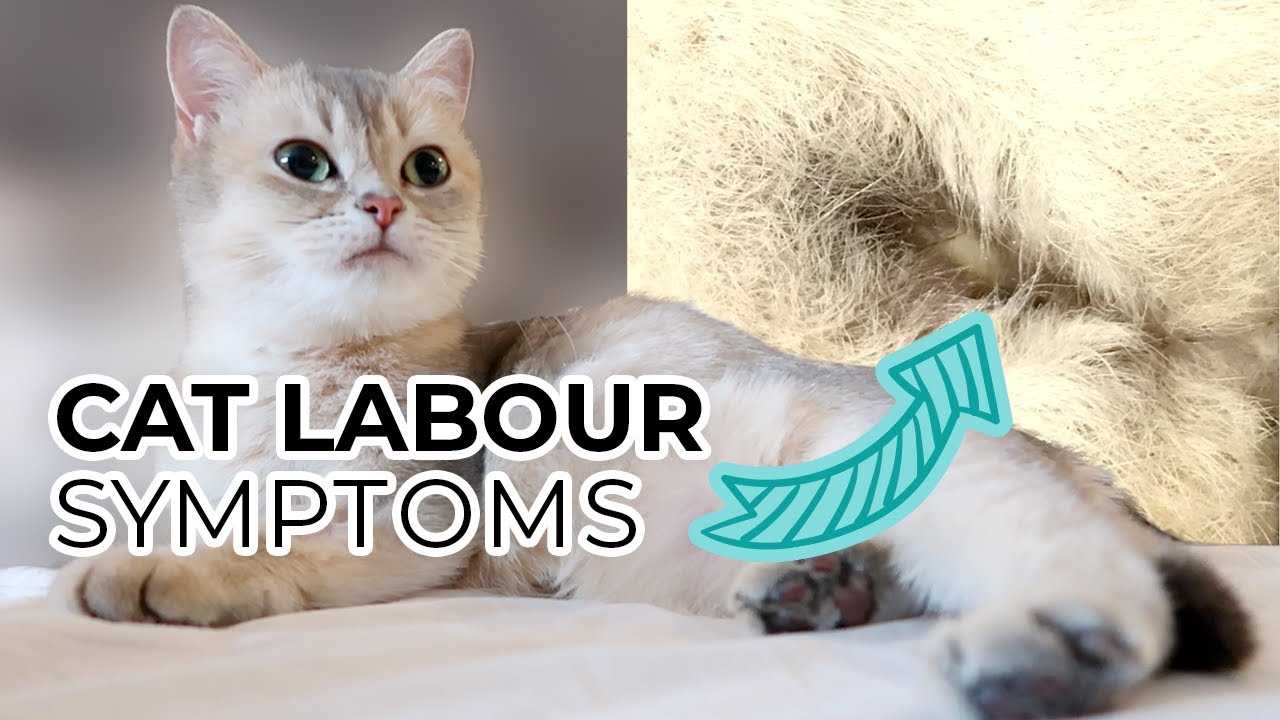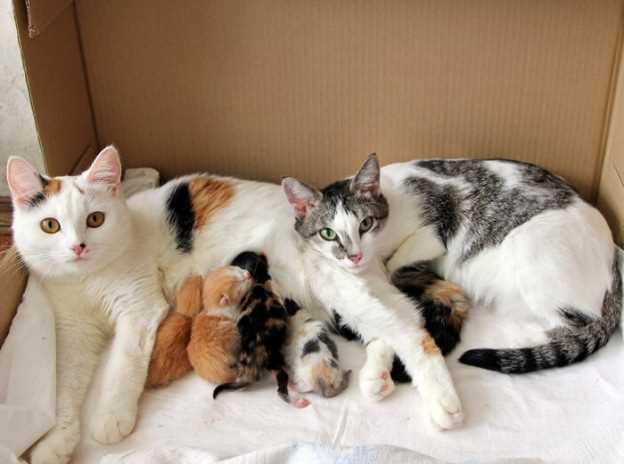

Keep the birthing area quiet and comfortable. Soft bedding, like blankets or towels, provides a cozy spot for the mother and her new litter. Make sure the space is free from disturbances, allowing her to bond with her kittens in peace.
Monitor her closely but don’t intrude. Watch for any signs of distress, such as excessive panting or vocalization. If she seems to struggle or if any kittens appear to be stuck, seeking veterinary assistance is important.
Ensure hydration and nutrition are easily accessible. Fresh water and high-quality food should be nearby, as nursing can be demanding. Encourage her to eat well to maintain her energy and health during this period.
After the initial excitement, check each kitten for health signs. Look for proper nursing behavior and make sure they’re gaining weight. If any appear lethargic or aren’t nursing, reaching out to a vet is advisable.
Keep the environment clean. Regularly change bedding and keep the area tidy to prevent any infections. A clean space is essential for the well-being of both the mother and her kittens.
Finally, allow the family to bond without interruption. Limit visits from others to reduce stress. This time is crucial for establishing a strong parent-child relationship.
Prepare a Safe Space for the Mother Feline
Choose a quiet, low-traffic area away from loud noises or disturbances. A secluded corner of a room often works best.
Gather necessary items:
- A sturdy box or a cozy bed lined with soft blankets.
- Fresh water accessible nearby.
- Some litter for hygiene purposes.
Ensure the space is clean and free from hazards like cords or small objects that could pose risks.
Keep the environment warm, as newborns need to maintain body heat. A heating pad set on low can help, but ensure it’s covered to prevent direct contact.
Limit access to other pets during this time to avoid stress. Monitor interactions closely.
Regularly check on the new family, but avoid intruding excessively. Allow the mother to feel secure while she tends to her little ones.
Monitor the Birth Process Carefully
Stay close and observe closely during the delivery. It’s vital to keep an eye on every stage, ensuring everything progresses smoothly. If any signs of distress arise or if the time between kittens exceeds an hour, seek veterinary assistance immediately.
Prepare to assist only if necessary. Most mothers handle the process instinctively, but be ready to intervene if complications occur, such as a kitten stuck in the birth canal. Maintain a calm environment to reduce stress for the mother.
After each kitten arrives, the mother will typically clean and stimulate them. Ensure she doesn’t overlook any newborns. If she seems overwhelmed, gently help by removing the placenta and stimulating the kittens to encourage their first breaths.
Consider having a list of emergency contacts handy, including a veterinarian’s number. This can save precious time in case of unexpected issues. Also, keep some resources on hand, like information about the best hairball supplement for cats, to ensure her health post-delivery.
Once all kittens are born, watch for any signs of neglect. If the mother isn’t nursing or caring for her litter, be prepared to step in with bottle feeding or other care options.
Recognize Normal and Complicated Birth Signs
Normal labor involves specific signs: nesting behavior, vocalizations, and contractions. Look for restlessness and the mother arranging bedding. If she starts purring and kneading, it’s a positive indication she’s preparing for delivery.
During contractions, observe her abdomen; it should tighten and relax in intervals. This process may vary, lasting several hours. As the moment approaches, you might notice her breathing changes–becoming rapid and shallow.
Complications can arise unexpectedly. If there’s excessive bleeding, or if the mother seems distressed without producing kittens after a prolonged period, immediate action is required. Signs of distress include continuous yowling or signs of pain. If she attempts to deliver without success for more than an hour, or if a kitten is visibly stuck, seek veterinary assistance.
Monitoring the situation closely allows for swift intervention if needed. Keep calm and provide a reassuring presence to help ease her anxiety during this critical time.
Provide Immediate Care for Newborn Kittens
Ensure each tiny furball receives attention right after entering the world. Check for signs of life; they should be moving and making sounds. If a kitten is silent or not moving, gently stimulate it by rubbing it with a soft cloth to encourage breathing.
Feeding and Comfort

Newborns need colostrum from their mother within the first few hours. If the queen isn’t nursing, use a specialized kitten milk replacer. Avoid cow’s milk, as it can upset their stomachs. Feed them every 2-3 hours, using a bottle designed for kittens.
Temperature Regulation

Newborns struggle to maintain body heat. Keep them warm using a heating pad on low, ensuring it’s covered with a towel to prevent burns. The ideal temperature should be around 85-90°F (29-32°C) for the first week, gradually reducing as they grow.
Ensure the Mother Cat is Hydrated and Fed
Provide fresh water and nutritious food immediately after the delivery. Hydration is crucial for milk production and recovery. Offer water in a shallow dish to avoid spills and encourage drinking.
For meals, select high-quality kitten food, as it contains the necessary nutrients for nursing mothers. Feed small portions multiple times a day, ensuring she has access to food at all times.
| Food Type | Benefits |
|---|---|
| Wet food | Increases hydration and is easier to consume. |
| Dry kibble | Supports dental health and provides essential minerals. |
| Kitten formula | High in calories and nutrients, ideal for nursing. |
Keep an eye on her eating habits. If she shows signs of not eating or drinking, consult a veterinarian. Regular monitoring of her hydration and food intake is key to her well-being and the health of her kittens.
Understand the Importance of Veterinary Check-ups
Regular veterinary visits are crucial for ensuring the well-being of both the mother and her kittens. Schedule an appointment within the first few days after the arrival of the new litter.
- Vaccinations: Ensure the mother is up to date on her vaccinations to prevent any diseases that could affect the newborns.
- Health Assessment: A vet will provide a thorough examination to check for any complications or health issues that may arise postpartum.
- Nutrition Advice: Receive guidance on the best diet for the nursing mother to support her recovery and the growth of her kittens.
- Parasite Control: Discuss parasite prevention options to keep the environment safe and healthy for the little ones.
After the initial check-up, follow-up visits are recommended to monitor the kittens’ growth and development. Each kitten should be evaluated for health issues and receive necessary vaccinations at the appropriate ages.
Stay proactive about health concerns. If you notice anything unusual, such as lethargy or poor feeding, contact the vet immediately. A quick response can make a significant difference.
For cleaning any messes during this time, you may find useful information regarding tools like the can mea be used for packed bed wet scrubber.
Plan for Socialization and Finding Homes for Kittens
Begin introducing the tiny furballs to various people, sounds, and experiences. This exposure helps develop their confidence and adaptability. Aim for short, positive interactions with new faces, ensuring each encounter is gentle and loving.
Engaging with Kittens
Handle the little ones regularly, creating a routine that includes playtime and gentle petting. This builds trust and affection. Use toys like feathers or balls to encourage playful behavior, which is vital for their development. Observing their interactions with each other also provides insights into their personalities.
Finding Suitable Homes
Once the kittens are around eight weeks old, start the search for loving homes. Utilize social media platforms and local community boards to share adorable photos and descriptions. Screen potential adopters by asking questions about their experience with pets and their lifestyle, ensuring a good match. Consider creating an adoption contract to outline responsibilities.
Support new owners by providing guidance on care, feeding, and socialization tips. This not only eases their transition but also strengthens the bond between the new family and the adopted kitten.









